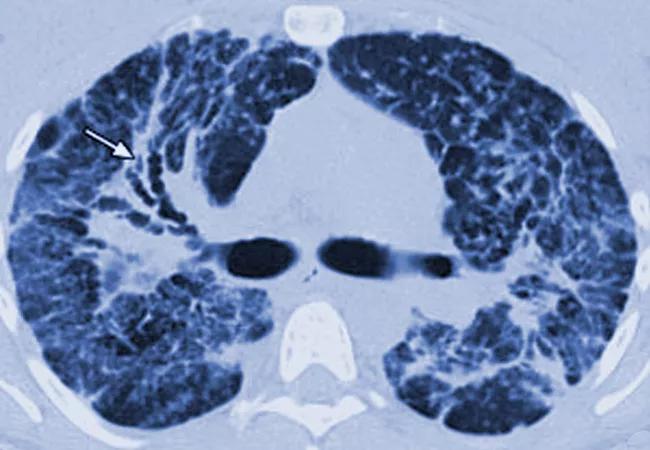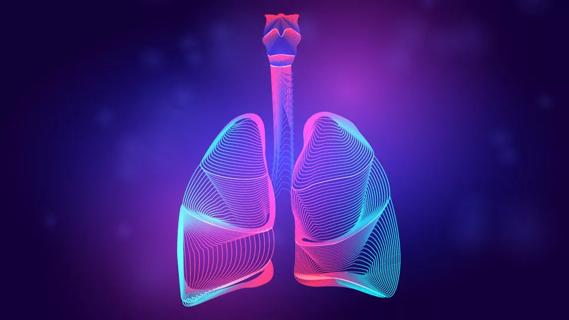Study finds link between socioeconomics and comorbidities

Mild symptoms and a quick recovery are common in most cases of sarcoidosis, but a minority of patients have significant morbidity and impaired quality of life (QoL) because of multiorgan involvement. Patient income may be a key factor in the poorer disease outcomes, according to results of a new study led by Cleveland Clinic researchers.
Advertisement
Cleveland Clinic is a non-profit academic medical center. Advertising on our site helps support our mission. We do not endorse non-Cleveland Clinic products or services. Policy
Published in the American Journal of Respiratory Critical Care Medicine, the findings are from an analysis of data from 2,318 patients with sarcoidosis captured in the Sarcoidosis Advanced Registry for Cures database. The individuals completed a 72-item questionnaire on demographics, disease involvement, diagnostic testing, treatment modalities, and health and social outcomes. Their responses — which could be updated over time — were recorded during a 31-month period.
Past research has shown that socioeconomic factors are associated with worse disease severity at diagnosis of sarcoidosis, but the relative importance of such variables on morbidity and disease burden has not been fully elucidated. The aim of the new study was to determine whether there was an association between income and sarcoidosis outcomes, after controlling for socioeconomic and disease-related factors.
The authors hypothesized that income would play an important role in worse outcomes in patients with sarcoidosis, but their findings on comorbidities came as somewhat of a surprise.
“We anticipated the link with income but we weren’t initially expecting that comorbidities would be so important,” says Logan J. Harper, MD, a fellow in the Department of Pulmonary Medicine, who was first author on the study. “We think a combination of things is going on with patients with worse outcomes, such as less access to care, less ability to take medications and difficulty interacting with providers.”
Depression (28%), sleep disorders (22%), chronic fatigue (19%), and chronic pain (19%) were the most common sarcoidosis-related comorbidities. The most common steroid-related comorbidities were obesity (23%), obstructive sleep apnea (22%) and hypertension (17%).
Advertisement
“Some medicines for sarcoidosis can cause hypertension or diabetes and people with sarcoidosis can develop conditions such as depression or chronic fatigue syndrome,” says Dr. Harper. “What we found is that developing any of the new conditions was a really important driver of worse outcomes.”
Says Daniel Culver, DO, Director of the Interstitial Lung Disease Program in the Respiratory Institute, “We believe that a high proportion of the disease burden revealed by this study is due to excessive reliance on steroids for treatment of sarcoidosis, either in cases where no treatment is necessary, or when using steroids without access to other systemic medications that might avoid these toxicities.”
There was a correlation between comorbidities and income. Multivariate logistic regression showed that income was a significant predictor of development of new sarcoidosis-related comorbidity. The effect occurred on a gradient, with worse outcomes associated with the lowest incomes ($35,000-$85,000 odds ratio [OR] 1.4 [range 1.1-1.9], <$35,000 OR 2.4 [range 1.7-3.3]).
Lower-income patients also had significantly higher rates of new steroid-related comorbidities (<$35,000 OR 1.3 [0.9-2.0], $35,000-$85,000 OR 1.5 [1.1-2.1]), lower health-related QoL as assessed by the Sarcoidosis Health Questionnaire (P < 0.001), and experienced more impact on family finances ($35,000 OR 7.9 [4.9-12.7], $35,000-$85,000 OR 2.7 [1.9-3.0]). They were more likely to use supplemental oxygen, need assistive devices and lose their jobs than those with higher incomes.
Advertisement
In fact, lower income and a new sarcoidosis-related comorbidity were two of the top three leading predictors of worse quality of life for patients with sarcoidosis. In 63% of patients, comorbidities developed after their sarcoidosis diagnosis and they were strong independent predictors of poor outcomes. In random forest modeling, income was consistently a leading predictor of outcome. Their results, the authors conclude, suggest that the burden of sarcoidosis preferentially impacts the economically disadvantaged.
“An important lesson for clinicians who treat sarcoidosis is having an awareness of the social situation of their patients,” says Dr. Harper. “In individuals who identify as lower income or are lacking in social support, particular attention needs to be paid to the potential for comorbidities and their management.”
Says Dr. Culver, “This registry highlights the very high burden of sarcoidosis among affected individuals, especially those with lower socioeconomic status. The impact of sarcoidosis on individuals in the prime of their life, and on their family, has been underestimated by excessive focus on mortality alone as a marker of which diseases should be prioritized for advocacy and funding.”
The registry for the current study was a project of the Foundation for Sarcoidosis Research and this analysis was supported in part by the Ann Theodore Foundation. As an outgrowth of it, the authors have conducted focus groups of sarcoidosis patients with high and low incomes to try to determine what specific factors might be driving the relationship between poor outcomes and socioeconomic factors. Those results are expected to be published later this year.
Advertisement
“The next step in our research is determining what is driving the difference in comorbidities by socioeconomic status,” says Dr. Harper. “Are patients of lower socioeconomic status getting less aggressive care for the disease or are comorbidities in them being managed less aggressively than in their higher-income counterparts?”
“Lack of access to providers knowledgeable about steroid-sparing medications,” Dr. Culver concludes, “may account for many of the findings in this study, suggesting that strategies to improve outreach to at-risk populations will be key for optimizing outcomes.”
Cleveland Clinic is a World Association of Sarcoidosis and Other Granulomatous Disorders (WASOG) Sarcoidosis Center of Excellence. In that capacity, it provides multidisciplinary care to patients with all forms of sarcoidosis, while developing new treatment approaches through research. At Cleveland Clinic, patients with the disease have access to a variety of treatments beyond steroids, as well as participation in clinical trials.
Advertisement
Advertisement

Advanced COPD care benefits from diverse medical expertise and perspectives

Pearls to reduce the strain of RSV, COVID-19 and influenza infections

Largest study examines factors affecting asthma exacerbations during and after pregnancy

Initial findings demonstrate improved symptoms and reduced steroid dependence

Findings show profound muscle loss variance between men and women

VOC analysis could provide biological insight into risk factors associated with CDI

A review of conservative, pressure-based and surgical treatments for OSA

Volatile organic compounds have potential in heart failure diagnostics